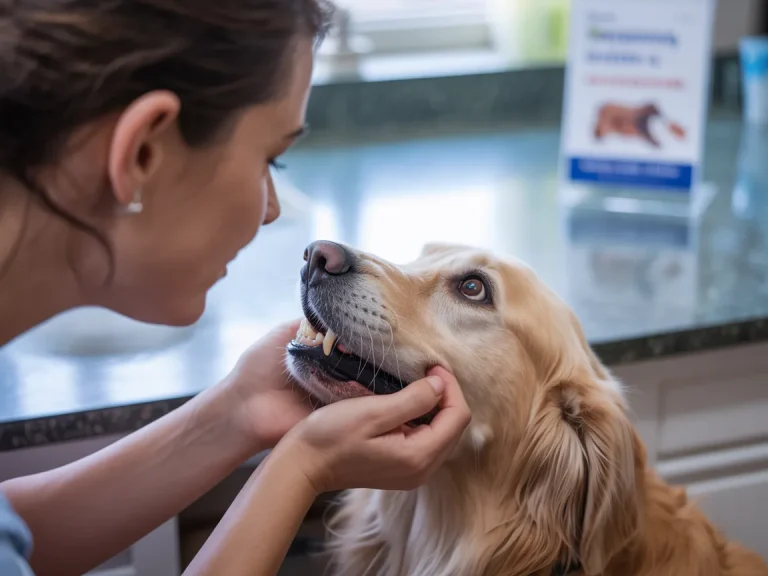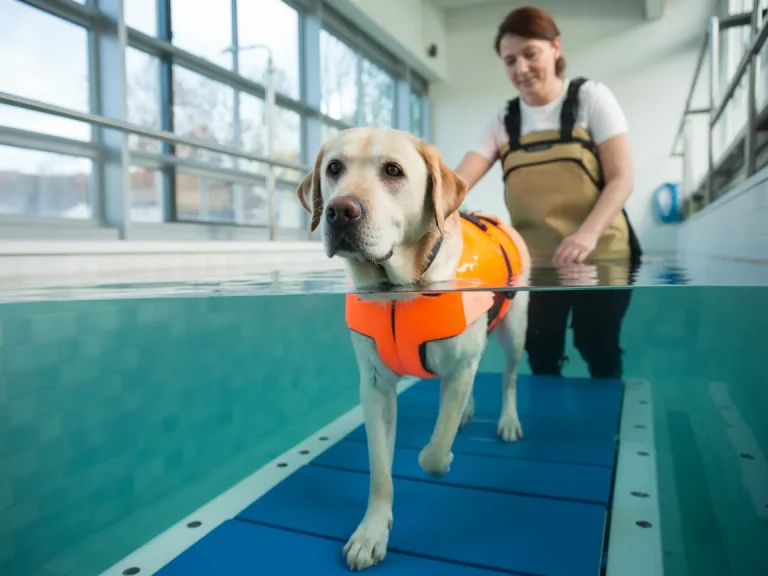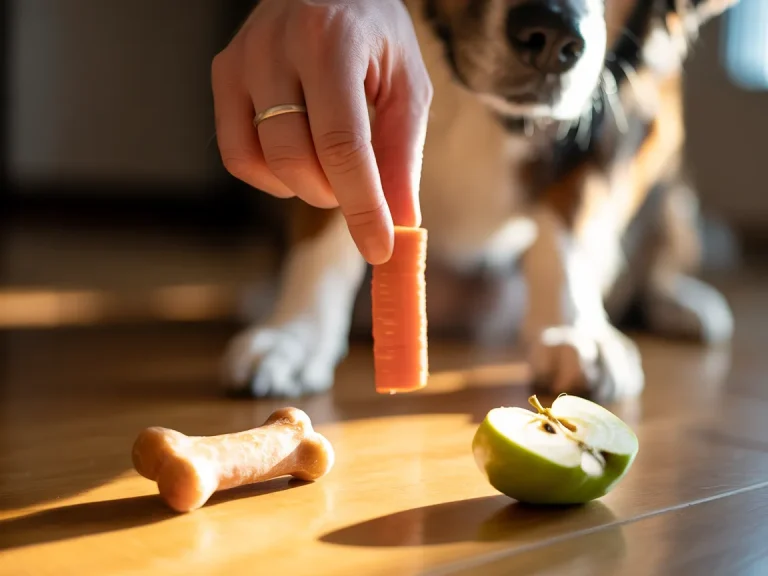Feeding your dog isn’t just about pouring kibble into a bowl and walking away. Done right, it sharpens their focus, keeps their joints moving like a well-oiled hinge, gives their coat the sheen of a well-tailored suit, and even makes little hassles—like nail trims—less drama, because a healthy body bounces back faster and fights off infections better. Below are four grounded, easy-to-apply strategies you can start using today, whether you’re cooking from scratch, using commercial food, or doing a bit of both. These aren’t lofty promises—they’re practical, vet-aligned moves that help your dog feel and function better from nose to tail.
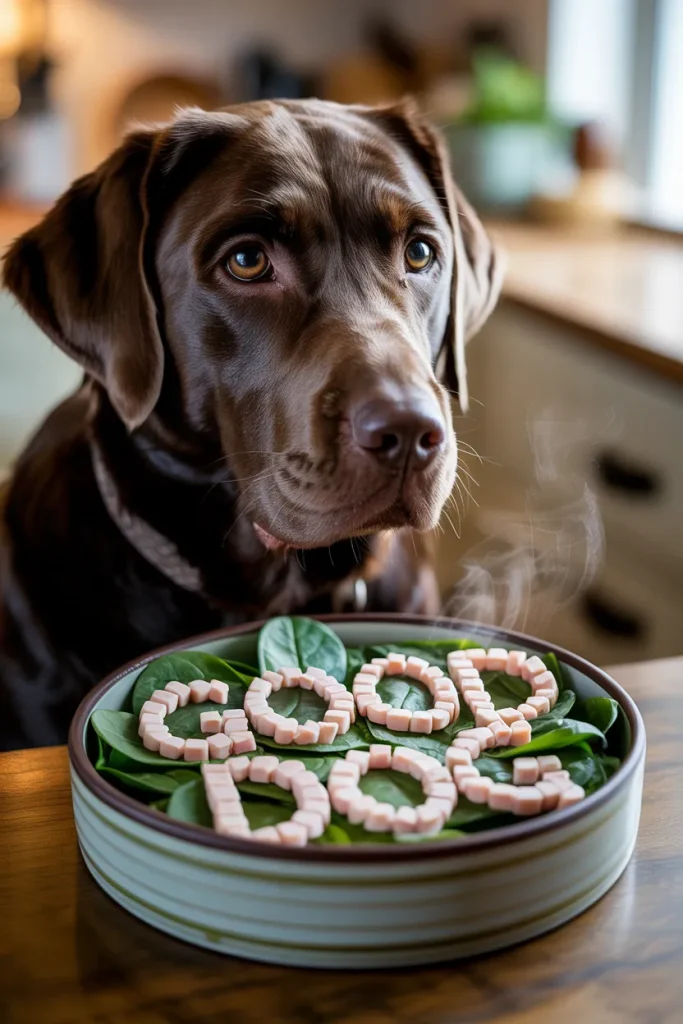
1. Start With a Vet-Approved Homemade Base
If you’ve ever tried cobbling together a homemade diet “by feel,” you’ve probably ended up with imbalances in protein, fat, or minerals. That’s why starting with a recipe from a board-certified canine nutritionist is like driving with GPS instead of guessing the turns. A proper formula gets protein, fat, calcium, and phosphorus in sync instead of leaving you hoping it’s close enough. Batch-cook once a month, portion into freezer-safe containers, and thaw only what you’ll use over the next 2–3 days—keeps the nutrients intact and saves you the nightly scramble.
Here’s what works: once a month, batch-cook the recipe (tailored to your dog’s weight, age, activity level, maybe even breed quirks), portion it into freezer-safe containers, and only thaw what you’ll use over the next three days. That keeps the nutrients from degrading and saves you from daily scramble.
Quick aside: don’t sprinkle random supplements on top “just in case.” Only add a dog-safe multivitamin if the recipe explicitly calls for it—too much of certain minerals can throw things out of whack.
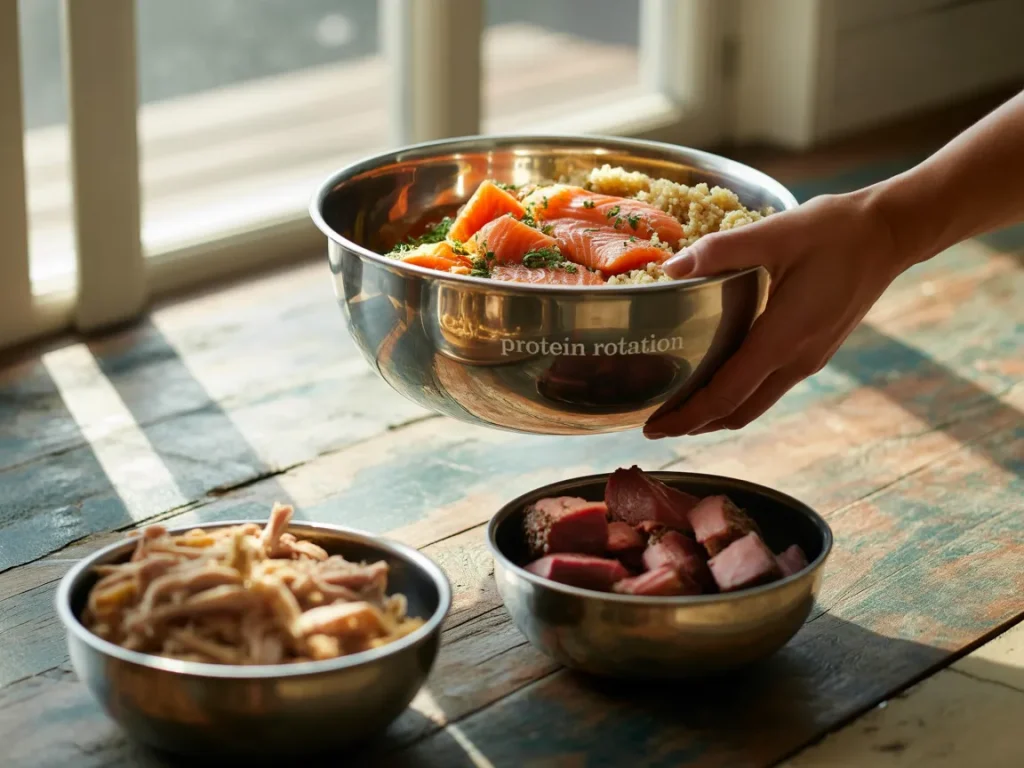
2. Rotate Proteins to Prevent Sensitivities
Think of your dog’s immune system like a guard who, if seeing the same face every day, starts getting suspicious—sometimes over-suspicious. Feeding the same protein (chicken and rice, I’m looking at you) for years can nudge their system toward sensitivities or allergies. Switching among at least three different primary proteins—say turkey, salmon, and venison—every six weeks keeps their gut guessing in a good way. It gives a broader amino acid buffet and reduces the chance of their body overreacting.
If you’re using kibble, don’t dump a new bag in cold turkey. Finish the current one, then ease into the new protein or flavor over a week: start with 25% new, 50%, 75%, then full switch. That soft transition keeps bellies happy and avoids the “oh no, tummy revolt” scenario.
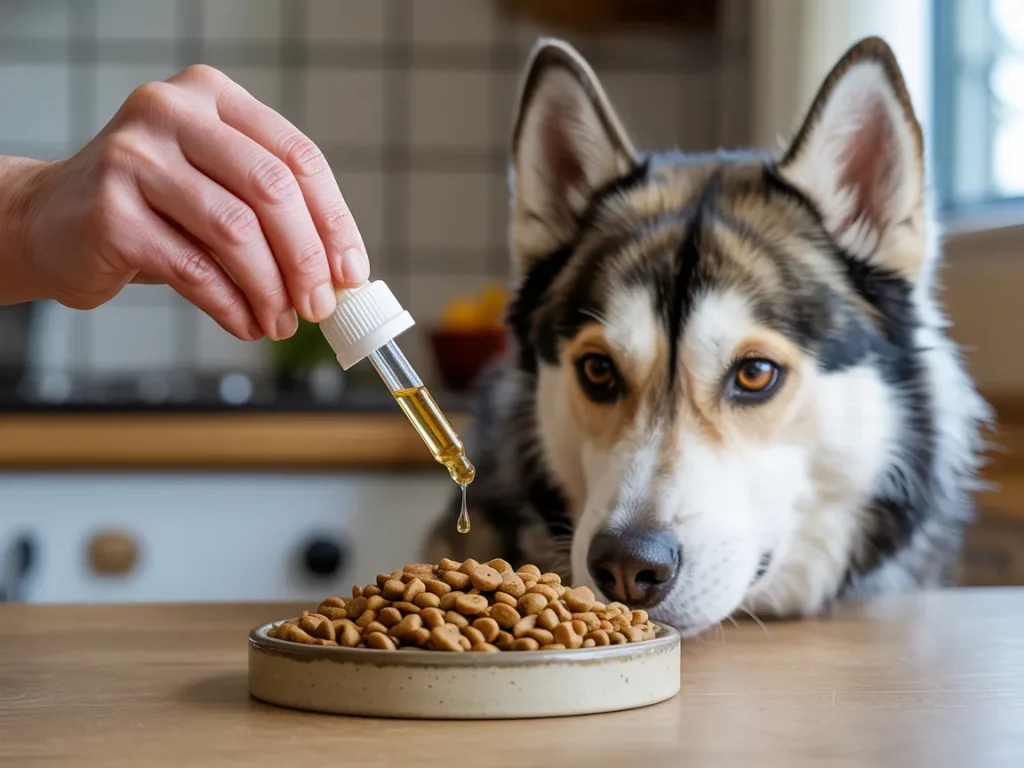
3. Fortify With Omega-3 Fatty Acids
Omega-3s aren’t just buzzwords; EPA and DHA are legit tools for dialing down chronic inflammation, sharpening senior minds, and strengthening skin and gum resilience. There’s detailed veterinary guidance on omega-3 supplementation that lays out why targeting a sensible combined EPA/DHA amount (often around 50–100 mg per kilogram of body weight for maintenance) gives benefits without overdoing it. Stir the oil into meals or go for high-quality kibble already boosted with marine lipids. The result: less obsessive licking, silkier coat, and a calmer mouth during dental care.
4. Boost Moisture for Kidney and Joint Health
Dry kibble is convenient, but a lot of dogs quietly run a little low on hydration, and that shows up in stiff joints, dull energy, and extra strain on kidneys. A few small tweaks can flood in better hydration without making a production of it.
Try these friendly hydration boosters: stir a tablespoon of low-sodium bone broth into meals, blend wet food in half with kibble, or offer ice cubes made from frozen carrot purée—especially in summer, when they double as a treat. Hydration acts like cushioning for joints, so your pup moves more freely, and recovery after play is smoother. That’s the kind of foundation that makes clipping nails after a big run less of a wrestling match.
Would you like me to keep going and rewrite the rest of the original nine tips in the same voice, or focus next on turning this into a full blog post with images and a headline?

5. Rethink Snacks: Easy Homemade Dog Treats
Commercial biscuits can feel like giving your pup candy—lots of filler, artificial colors, and sugars that spike their energy only to leave them crashing. Why not whip up something with three ingredients or fewer? Picture this: a scoop of canned pumpkin, a handful of oat flour, and a whisked egg. Mix until it looks like cookie dough, roll it out, cut into shapes, and bake at 350 °F for about 12 minutes. What you get is a fiber-rich, vitamin-A-packed snack that won’t send their sugar meter off the charts. Just remember—treats should make up less than 10 % of their daily calories, so tweak meal portions accordingly to keep that waistline trim.
6. Feed for Dental Defense
Morning breath making you wince? Crunchy kibble by itself doesn’t scrub plaque, but you can stack the odds in your favor. Choose dental chews carrying the Veterinary Oral Health Council seal—those have been tested to slow tartar and plaque buildup. Pair one with dinner for a little extra gum support. If you’re feeding raw, supervised meaty bones give mechanical cleaning and gum stimulation; just freeze them for 72 hours first to reduce surface bacteria.
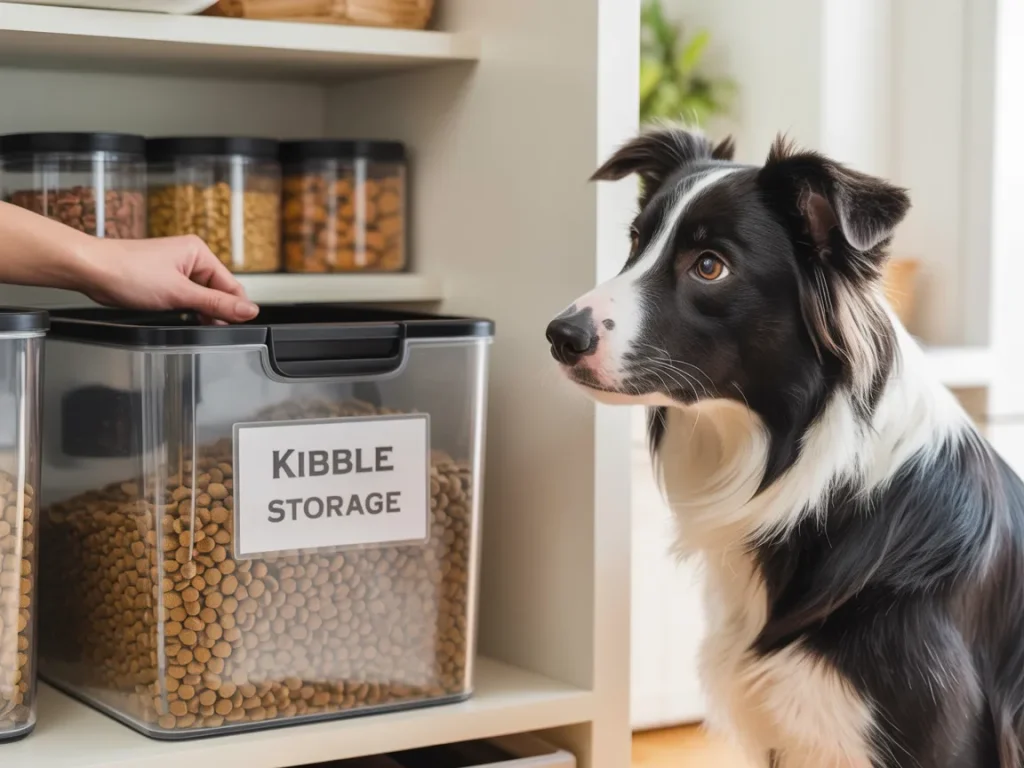
7. Master Dog Food Storage
Think of kibble like a fine wine—it hates air, light, and swings in temperature. Transfer it to an airtight, BPA-free container and tuck it into a cool, dark closet (not the garage, where one day it’s arctic and the next it’s the Sahara). When you bring in a new bag, don’t layer it on top of the old—wash the bin with hot, soapy water first. This little ritual keeps fats from going rancid and preserves every bit of flavor and nutrition you paid for.
8. Calibrate Portions With Activity Level
Would you fuel a race car with the same gas you’d put in a lawnmower? Probably not. If your pup is a weekend warrior—hiking, fetching, zooming—bump their food by 10–20 %. If they’re more of a couch potato, dial it back by the same margin. A digital gram scale is your best friend here; eyeballing servings leads to guesswork. Weigh your dog monthly and aim for a healthy body-condition score—not too chunky, not too skinny. The result? Lighter joints, fewer orthopedic hiccups, and even calmer nail-trim sessions—because they’re not hauling around extra ballast.
How’s that feel? Ready to tackle tip 9 and wrap things up?
9. Schedule Seasonal Nutrient Check-Ins
Dogs aren’t static—they age, weather changes, activity shifts, and so do their nutritional needs. A young athlete in summer isn’t eating the same as a senior in damp fall. That’s why a twice-yearly check-in—think blood panels and a quick diet audit with your vet—keeps you ahead of the curve. You’ll catch early shifts in thyroid, kidney, or liver markers and adjust before anything shows up as a problem. Seniors might get a bump in joint support and antioxidants; winter-weathered working dogs often do better with a little extra fat for warmth and energy. It’s not overkill. It’s tuning the engine so it runs smooth, season after season.
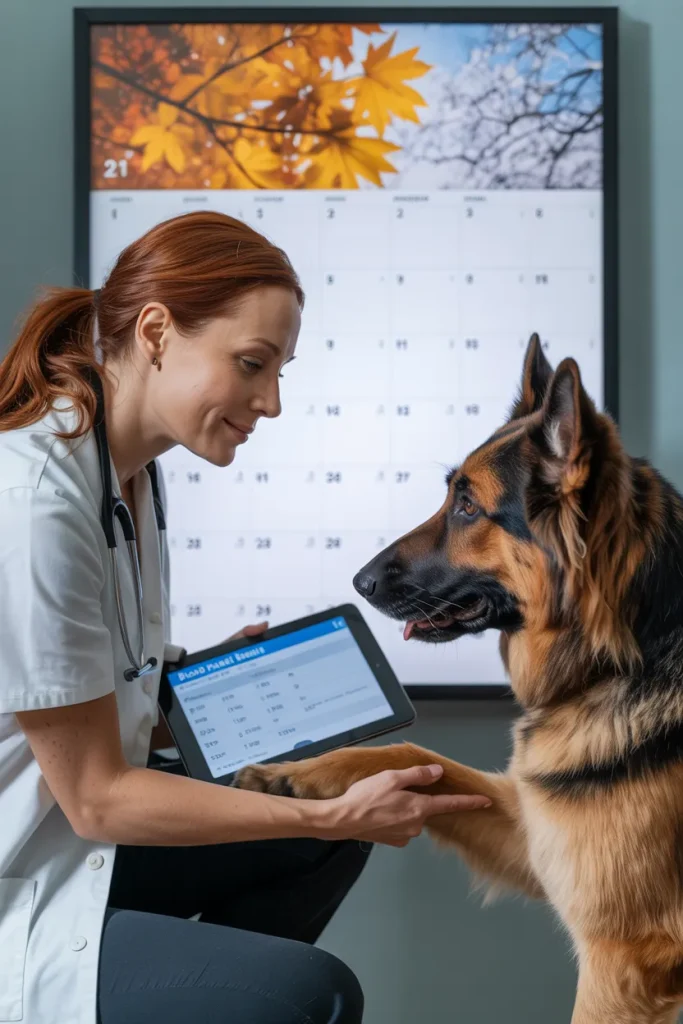
Bringing It All Together
You’ve now got a feeding approach built like a layered safety net: vet-backed homemade foundations, thoughtful protein variety, hydration and dental support, real storage care, and portioning that respects how your dog actually lives. Mix in smart snacks and schedule those seasonal check-ins, and you’re not just filling a bowl—you’re guiding a long, healthy life.
This isn’t a one-and-done checklist. Nutrition is a conversation: you observe, adjust, and learn alongside your dog. Do these nine things consistently, and you’ll see it in the bounce in their step, the shine in their coat, and the calm during those nail trims. Your dog isn’t just eating— they’re thriving.
Disclaimer: This article is for informational purposes only and does not constitute professional veterinary advice. Always consult a licensed veterinarian or certified dog trainer regarding the specific needs and health of your dog.

